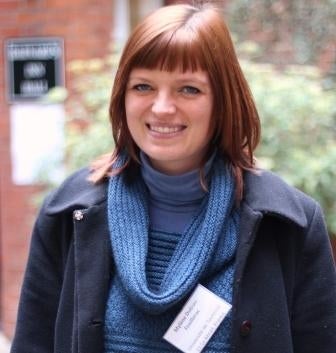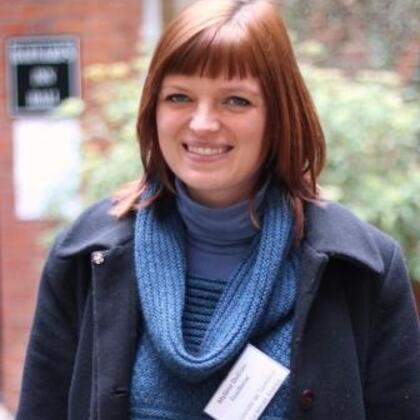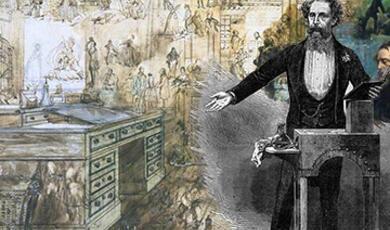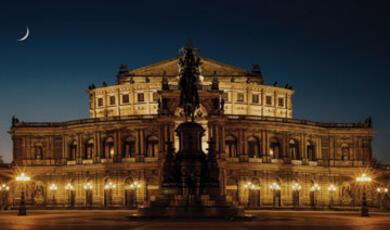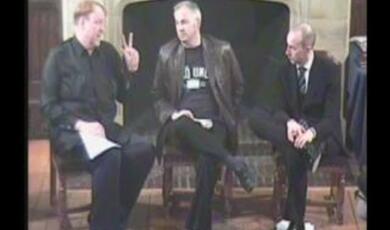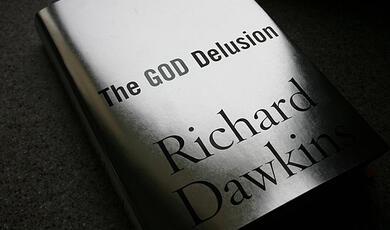12 April 2012
Verlaine’s poetry performed
through Debussy’s musical sounds:
“Spleen” in text and song
Mylène Dubiau-Feuillerac
This study begins with the hypothesis according to which Claude Debussy would have chosen Paul Verlaine’s poems for their innovative manner in the frame of tradition. In his mélodies the Ariettes oubliées (1903), on texts of Paul Verlaine chosen among Romances sans paroles (1874), Claude Debussy dissociates his work from a usual type in the genre of French Art song. Verlaine’s poetic techniques of contrasts and breaks, of repetition, of sound saturation, enrich the new organizational research of Debussy. The vocal lines wobble from a recitative to large curves in arabesques in the same line; the former vocal melismas gives way to a syllabic prosody without any repetition of word; and then harmonic motion is more a continuity of colors than dependent of structural tensions.
The renewal of language as well as innovation in a known frame would be notable points of convergence between research of Claude Debussy and of Paul Verlaine. Searching, as everyone knows, ‘music above all’ (Verlaine, 1962: 326-327), the poet reworks the habitual codes of French versification, by rethinking meters, rhymes, literary formats, but always in the tradition of poetry.
This similarity of creative attitudes is the starting point of this study. If Debussy chooses the texts of a poet renewing the meter in the meter, wouldn’t it be for him a support to renew music in this music genre? Even more, would it be possible to think that this first compositional period of his life (1882-1903), dedicated in great part to write and to rewrite melodies on poems of Verlaine, would be a period of preparation, of maturation of the modernity of his language, influenced by the work of the poet? As well as Paul Verlaine shocks because the metrics remains in very flexible lines (Verlaine, 1972: 722)[i], Claude Debussy innovates because vocality and motive progression reside in different ways...
To support this hypothesis, I will begin with the poetic work of Verlaine in its poem ‘Spleen’ and I will intertweave the musical answer which Debussy offered in his last melody of the collection of Ariettes oubliées. Following step by step the poetic behavior, I will raise the parallelism between the management of the poetic and musical materials, which leads to rethink the logic of progress of rhetorical discourse, poetical or musical.
‘Spleen’:
In his poem ‘Spleen’, Verlaine leads in parallel two types of discourse: passages of story telling and progress of a direct speech by the narrator.
The disposition of the poem in couplets allows receiving in a more sensitive way the alternation of story and speech, which mixes the description of natural phenomenon and the personal expression of the narrator. But this foreseeable linearity is broken, progressively, by the narrator’s flood of feelings confronted to the evocation of the landscape. The articulation of these levels of break, between story and speech, in the poem, is a first challenge offered to the progress of the musical discourse, which Debussy raises.
(The expression of the excess of feelings shown by the poem, so as to blind the real perception of the described landscape, is a second way of testing musical meaning: how to represent the excess, the saturation of colors? The poetic techniques employing the metric devices, the tools of repetition of sonorities, are a poetic compositional point which also guides Debussy’s musical organization.
The relation to time in the poem, which plays on a repetitiveness of the past and on the previsibility of situations, can also question a composer, as his art handles time and length. With devices of repetition in insignificant modifications, music also marks the flow of time. In conclusion, I will maintain that Debussy finally offers an alternative of motivic development by the use of motives and their juxtaposition. The intrinsic renewal of poem that Verlaine operates finds its counterpart in Debussy’s musical techniques of renewal.)
1. Paul Verlaine’s text: a work on two temporal levels
To recall the spleen, object of his poem, Verlaine chooses to demonstrate tension between past and present. The organization in couplets is significant, recalling duality between the description of past and the narration of the present, alternately during first four couplets, then mixed for the two last couplets. The speed of the cadenza of stanza offered by the couplet punctuates the time in a fateful way, leaving few space for the outpourings of the lyric subject’s feelings. The association of two lines, and of two temporal units with the couplets, allows also the representation of the duality of the loving relation invoked again and again by address to the loved one (with ‘tu’, ‘vous’, ‘chère’/ ‘you’, formal ‘You’, ‘dear’ ), and the presence of the lyric subject (‘je’; ‘I’ ).
Spleen
Les roses étaient toutes rouges, description / past
Et les lierres étaient tout noirs.
Chère, pour peu que tu te bouges, narration / present
Renaissent tous mes désespoirs.
Le ciel était trop bleu, trop tendre, description / past
La mer trop verte et l’air trop doux.
Je crains toujours, – ce qu’est d’attendre ! narration / present
Quelque fuite atroce de vous.
Du houx à la feuille vernie description
Et du luisant buis je suis las, description - narration / present
Et de la campagne infinie description
Et de tout, fors de vous, hélas ! description - narration / present
‘Spleen’ is written in octosyllables. The choice of the length of the line is also significant: the octosyllable, the longest in short lines category as the French linguist Benoît de Cornulier notices (Cornulier, 1981: p. 96 and sq. passim),[ii]stretches the line at the farthest of its stressed tension. The choice of this measure, with the accent at the end of the line located as far as possible without necessity of caesura, reinforces an experience of slowness which contributes, in ‘Spleen’, to the semantic field of the expansion of time, offered by the poem with the words: ‘infinie’, ‘attendre’, ‘las’ (‘infinite’, ‘to wait’, ‘bored’)… The passages of story, very flat in their stretched enunciation, use the octosyllable in its extreme fluidity, without strong cut, while the passages of speech are shed into light by a black punctuation, factor of irregularity: comma in line 3;[iii]comma and dash in line 7;[iv]two commas in the last line. [v]
Speech (introduced in red) gaining the upper hand on the description (notated in black), in the two last couplets, shows officially, poetically, the expressive excess of the narrator ‘splashing’ on the nature which encircles him. The anaphora of the three last lines takes at the same time story and speech, in an amalgam which describes the landscape as well as the feeling of the narrator (the spleen). It is here really a ‘watercolor’, according to the title of the sub-grouping of poems Aquarelles, among Romances sans paroles.
In Debussy’s mélodie
Claude Debussy makes the same progression, couplets by couplets, with the same length of melodic sentences: a line is quasi systematically distributed on two measures for the whole melody - except for the last line, stretched. The alternation of recitation in linear movements for the description in the even couplets or with more animated and more flexible melody for the narration of the odd couplets is also found in voice and piano parts.
As an example, the first couplet is recited recto tono: the linearity of enunciation and descriptive neutrality are recreated in music by recitative in the low tessitura of the voice, without the support of the piano.
Exemple 01. Spleen, Ariettes oubliées n° 6, 1903, mesures 4 à 8.
The third couplet follows twice the same regular downward movement, the fifth, as well as the first line of the sixth couplet, recite the text on intervals using the arpeggio, in a very regular way rythmically (as we can see for the scansion of ‘de la campagne infinie’; ‘Of the infinite countryside’).
On the opposite, the even couplets, bearing the expression of the lyric subject, follow more sinuous vocal lines, rythmically unstable, broken by silences and alternations of pitches, and using rhythmic patterns leading to a movement, like the doted eighth note, with its sixteenth note leading its resolution on the following downbeat.
For example, both following lines of the second couplet are entirely in opposition: first of all by the tessiture used (high F sharp), and by the ambitus (high F sharp - low E flat). The rhythmic disposition of notes is freer, introducing very variable prosody, in link with the diction of the text. This creates opposition with the monotony of the regular eighth notes of the first lines. The tempo is agitated Con moto, accompanied by a crescendo for line 3, then by two successive crescendi for line 4.
Debussy follows step by step the proposals of Verlaine’s poem, on the contrary to vocal lines which would be meant to be ‘melodious’ to answer the type of French Art Song in the 1880s (Debussy wrote ‘Spleen’ first in January, 1886).
The piano leaves the entire place to the voice for the beginning of the song, then it will take little by little a more significant importance, by the use of themes and musical motives unifying the whole work. This musical treatment will be the object of our second part.
The composer seems to answer the choices of enunciation in Verlaine’s poems, differently for each couplet, by getting closer to what would be a descriptive declamation - linear, without relief, repetitive - or of a passionate declamation - rythmically varied, going up to vocal excess by the end. But these melodic fragments, always different, disturbs the principle of coherence of the musical material of a piece at the end of the nineteenth century.
Debussy relies on other parameters than those of the speech of enunciation: repetition and saturation of the colors, present in the poem, allow him to accomplish in another way the thematic unit necessary for the tonal musical frame.
2. The visual and sound proposal of Paul Verlaine: a tension suggested by work on repetitions and saturation
Always in a research of signification thanks to poetic techniques, Verlaine works with the tones, with the length of syllables, to recall the spleen of the lyric subject, trying to illustrate orally the feeling of time in the poem.
The length of the declamation of the text seems stretched by the delivery imposed by the choice of words and groups of words. The difficulty of diction and the emphasis with repetitions of words and syntactic structures, the paronomases (repetitions of same sounds, as ([t], [d],[ʁ] ; in bold here), or the use of double vowels (aie, ou, ie, oi, eu, ai, ui, euill; underlined here) or double consonants participate to this ‘lassitude’ of things: the burden of the spleen is transcribed here by the words themselves - as we can hear if we declaim the text.
The clattering of sounds makes sensitive the clattering of colors and the ‘excess’ of feelings with too lively colors (‘toutes rouges’, ‘trop bleu’, ‘trop verte’, ‘du luisant buis’: ‘very red’, ‘too blue’, ‘too green’, ‘of shining boxwood’). Excessive sound is significant of too violent visual sensation. Where story and speech seemed divided into couplets, we can point out that tones are led at the same time throughout all the couplets, already mixing feelings coming from description and feelings of the narrator. These same tones, reduced around a core of consonants and of associations of vowels, create a sound color which unifies the text, participating of visual ‘lassitude’ by excessive sound redundancy.
In the same way, in Debussy’s setting, melodic repetitions appear in a particularly dense way throughout the work. The main motive of the melody, appearing at the beginning, at the end, and regularly during the piece, establishes itself as a continuously returning theme, just like the endless re-emergent sounds of despair in the poem. This theme is almost always the same: only its environment is changing, by a kind of process of evolution of its decor, more than a process of development or variation. Displayed without accompaniment in introduction to the melody (as you can see on the example), it is tonally ambiguous, and driven in a sinuous way towards the lowered IInd degree to the Vth degree, assuming lately a tonic of F minor.
This motto comes back six times throughout the piece, transposed only for two occurrences into measures 22-25, then again in the original key at the end, in measures 26-27, linked to timeless lassitude on words ‘Et de la campagne infinie’ (‘And by the infinite countryside’). It goes through all the couplets, story-telling ones or speech ones, in an irregular way.
The reappearance of the main theme, as well as other punctual techniques as the recurrent rhythm of doted eighth note and sixteenth note, or the chromatic movements in the piano part, throughout the melody, participate for the total construction of poetic evocation, by recreating networks of tones throughout work.
I suggest now to listen to a performance of this song, by Sandrine Piau and Jos van Immersel, in order to listen to the moving of the tempi and the flexibility of the accompanying motives, to feel this creation of a time space.
(The unit of the piece is carried by the musical material in reply to the poetic material. This motto seems to be treated as a significant aspect of the languid spleen, arriving at a paroxysm in final evocation, and presented always barely changed. Another effect is present, raised according to the evocation of the poem: the work on the flow of time, as its stretching, its widening, its acceleration, thanks to the techniques of juxtaposition, of superimposing and of elasticity of motives.)
Breaks and contrasts created by different speeches, unforeseen accents coming from non regular poetic stresses, make of ‘Spleen’ a succession of different musical instants. The time always seems unstable (cf. Gautier, 1997) under every line, even if the regular metric of the octosyllable is observable, then this instability is overlapped by reiterations of musical motives. The temporal perception is flustered, by this not foreseeable, irregular reminiscence of theme, as movements of energy more than development of thematic material. We feel a more flexible musical temporality, linked to the dilution of marks of tonality, and of harmonic rhythm which underlay it.
If the length of this piece is finally very short (less than 3 minutes), the musical time recalls at the same time haste and infinity, heavy trouble and ardent passion, speeding the time up and dilating the instant.
Conclusion: a renewal of musical speech and of perception of time
The understanding of linguistics and poetics appeared very essential for such a work: necessary, intrinsically linked to the development of this language in acts - poetical or musical language. This research wants to bring elements in understanding the way Claude Debussy worked out his language, notably his treatment of the musical material and his temporal behavior in music. Rhythmic anticipation, juxtaposition, overlapping with dilated or stressed motives, show how to use temporality in a very short space.
Lately, minimalist format of Préludes for piano, composed in years 1909-1913, gets closer to that of melodies, and seems to be a pianistic culmination in this maturity of the musical language of the composer, and in his work on the time with motives. Already in this song ‘Spleen’, we can appreciate the instant which relates Vladimir Jankélévitch (1976: 284):
Each prelude immobilizes one minute of the universal life of things, an instant of the history of the world, and it stops this universal life out of any future and of any succession, without relation neither with before nor with after. These pictures, at the same time eternal and momentary, form a heterogeneous tapestry of escaped impressions.
Chaque Prélude immobilise une minute de la vie universelle des choses, un moment de l'histoire du monde, et il arrête cette vie universelle ... hors de tout devenir et de toute succession, sans rapport ni avec l’avant ni avec l’après. Ces images à la fois éternelles et momentanées forment une tapisserie hétéroclite d’impressions fugitives.
… so does the Aquarelle we just heard.
© Mylène Dubiau-Feuillerac, 2012
Notes
[i]Cf. in ‘Critique des Poèmes Saturniens’ : ‘En un mot comme en cent, j’aurais [selon mes "jeunes confrères"] le tort de garder un mètre, et dans ce mètre quelque césure encore, et au bout de mes vers des rimes.’
[ii]La nécessité d’un accent interne, déterminant une césure, ne se fait pas sentir en dessous de huit vers.
[iii]Le vers 3, avec ‘Chère’, provoque un heurt rythmique, un contre-accent, par son accentuation syncopée, mise en relief par la virgule.
[iv]Cette large coupe fortement ponctuée fait marquer un fort arrêt, appuyant la dernière syllabe de ‘toujours’, et illustre par là l’attente exprimée, l’aparté expressif ‘- ce qu’est d’attendre !’.
[v]L’amplification rythmique est extrême, avec l’emploi de deux coupes, appuyées par la reprise de sonorité interne avant chaque virgule (‘tout’ et ‘vous’) dans un vers court – mise en rythme encore renforcée par le point d’exclamation final.


 Login
Login
